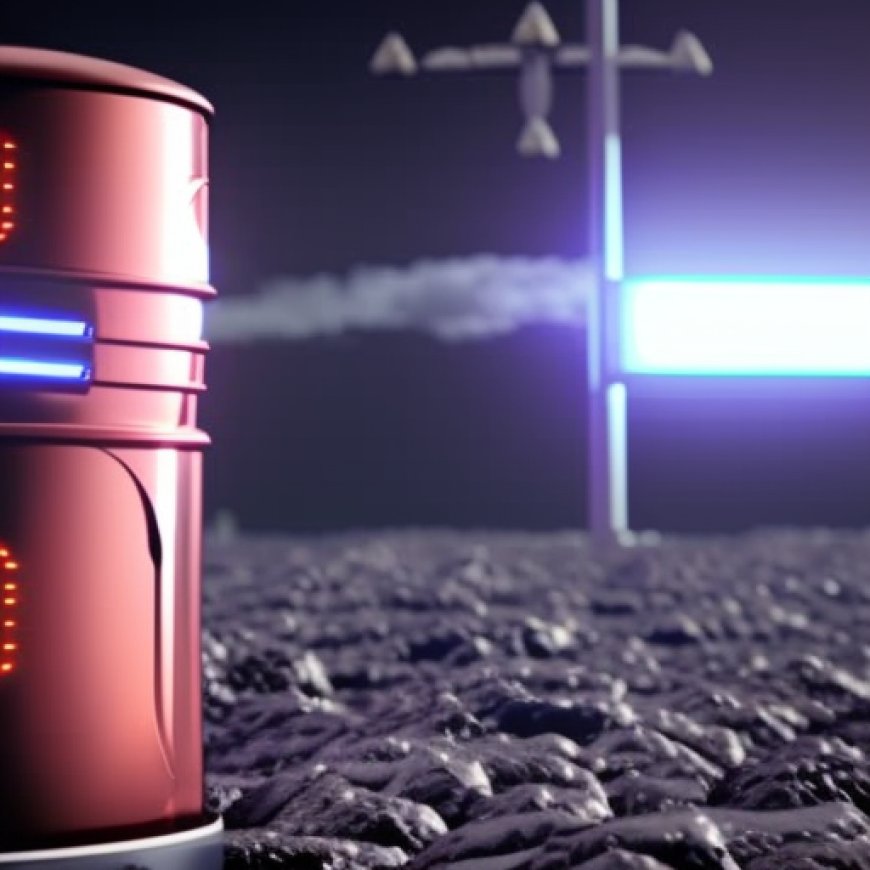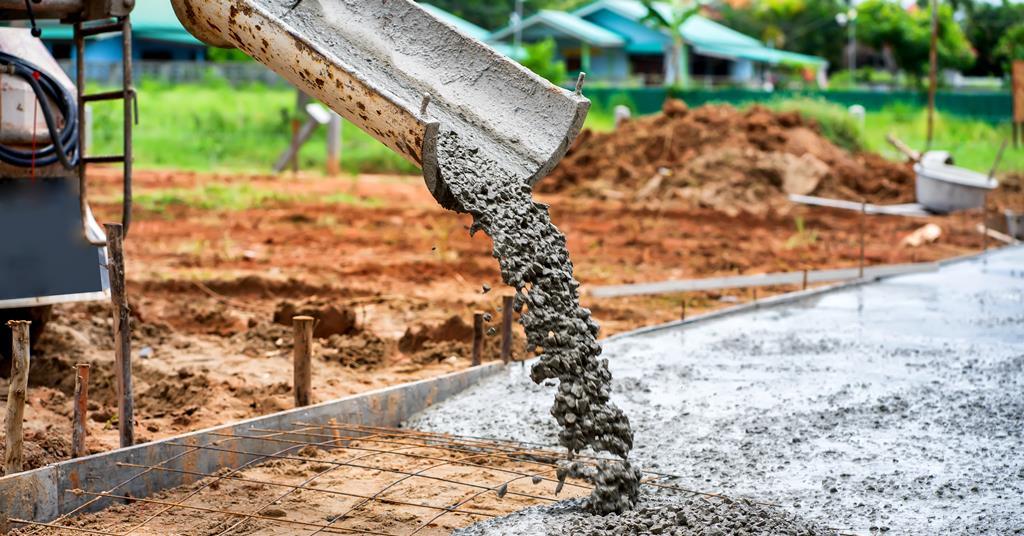Supercapacitor cement could supercharge renewable energy storage
Supercapacitor cement could supercharge renewable energy ... Chemistry World


Incorporating Nanoparticles of Carbon Black into Wet Cement to Create Supercapacitor Electrodes

Researchers in the United States have demonstrated that by incorporating nanoparticles of carbon black into wet cement, it can be transformed into a supercapacitor electrode once it has cured. This innovative material has the potential to store renewable energy and could have applications such as roads that can wirelessly charge electric vehicles.
Sustainable Development Goals (SDGs)
- Goal 7: Affordable and Clean Energy
- Goal 9: Industry, Innovation, and Infrastructure
- Goal 11: Sustainable Cities and Communities
- Goal 13: Climate Action
The production of cement and concrete is currently responsible for approximately 8% of global carbon dioxide emissions. While there have been attempts to reduce these emissions through the use of alternative cement formulations, these efforts have not yet achieved widespread success. Additionally, the increasing investment in intermittent renewable energy sources has created a demand for storage technologies. However, traditional batteries are not scalable due to their reliance on rare materials. To address these challenges, Franz-Josef Ulm from the Massachusetts Institute of Technology (MIT) and his colleagues have developed a bipartite solution by adding new functionality to concrete, allowing it to be used as a ‘structural capacitor’.
Research Methodology
- The researchers added nanoparticles of carbon black to cement paste.
- The hydrophobic nature of the carbon black nanoparticles initially kept them isolated in the water-rich environment.
- As the cement cured, the hydrophilic calcium silicates formed calcium silicate hydrates and calcium hydroxide, removing free water from the system.
- The carbon nanoparticles then self-organized into a highly conductive network that permeated the cement.
- By soaking the cement in potassium hydroxide, the researchers allowed ions to diffuse in and out of the pores.
- Connecting the electrode to a positive charge attracted negative ions and repelled positive ions, and vice versa when connected to a negative charge.
- Separating two saturated cement slabs by a dielectric membrane allowed a potential difference to build up and energy to be stored.
The researchers successfully used small charged cement supercapacitors to power a 3V LED and are now looking to explore large-scale, real-world applications. Although the charge/discharge rate is limited by the porosity of the cement, this limitation is not a concern for building foundations that can store solar energy. Ulm explains that “you have the whole day to charge the supercapacitors and then overnight… you use it to run whatever type of energy load you need for the home.”
The researchers also demonstrated that they could increase the porosity of the cured cement by adding extra water during production. This allows for faster charge/discharge cycling, which could enable applications such as roads that charge passing electric vehicles through electromagnetic induction. However, this approach compromises the strength of the concrete. Co-author Admir Masic emphasizes that different applications will have different requirements, but the accessibility and affordability of the material make it highly promising for widespread adoption.
Expert Opinions
Deborah Chung from the University of Buffalo in New York expresses skepticism about the strength measurements presented in the research. She points out that while the researchers rely on hardness measurements from nano-indentation, this is not a widely recognized mechanical property indicator in the concrete field. Chung concludes that the material referred to as a “structural electrode” is actually fragile due to its high porosity.
Bernhard Pichler from Vienna University of Technology in Austria, on the other hand, does not dispute the strength measurements and finds the research extremely interesting. He notes that the initial water-to-cement mass ratio used by the researchers allows for the production of regular-strength concrete. Pichler believes that this paper will have a significant impact on his scientific community.
SDGs, Targets, and Indicators
| SDGs | Targets | Indicators |
|---|---|---|
| SDG 7: Affordable and Clean Energy | 7.2: Increase substantially the share of renewable energy in the global energy mix | Not mentioned in the article |
| SDG 9: Industry, Innovation, and Infrastructure | 9.4: Upgrade infrastructure and retrofit industries to make them sustainable, with increased resource-use efficiency and greater adoption of clean and environmentally sound technologies and industrial processes | Not mentioned in the article |
| SDG 11: Sustainable Cities and Communities | 11.2: By 2030, provide access to safe, affordable, accessible, and sustainable transport systems for all, improving road safety, notably by expanding public transport, with special attention to the needs of those in vulnerable situations, women, children, persons with disabilities, and older persons | Not mentioned in the article |
| SDG 13: Climate Action | 13.2: Integrate climate change measures into national policies, strategies, and planning | Not mentioned in the article |
| SDG 17: Partnerships for the Goals | 17.16: Enhance the global partnership for sustainable development, complemented by multi-stakeholder partnerships that mobilize and share knowledge, expertise, technology, and financial resources | Not mentioned in the article |
1. Which SDGs are addressed or connected to the issues highlighted in the article?
The issues highlighted in the article are connected to SDG 7: Affordable and Clean Energy, SDG 9: Industry, Innovation, and Infrastructure, SDG 11: Sustainable Cities and Communities, SDG 13: Climate Action, and SDG 17: Partnerships for the Goals.
2. What specific targets under those SDGs can be identified based on the article’s content?
Based on the article’s content, the specific targets that can be identified are:
- SDG 7.2: Increase substantially the share of renewable energy in the global energy mix
- SDG 9.4: Upgrade infrastructure and retrofit industries to make them sustainable, with increased resource-use efficiency and greater adoption of clean and environmentally sound technologies and industrial processes
- SDG 11.2: By 2030, provide access to safe, affordable, accessible, and sustainable transport systems for all, improving road safety, notably by expanding public transport, with special attention to the needs of those in vulnerable situations, women, children, persons with disabilities, and older persons
- SDG 13.2: Integrate climate change measures into national policies, strategies, and planning
- SDG 17.16: Enhance the global partnership for sustainable development, complemented by multi-stakeholder partnerships that mobilize and share knowledge, expertise, technology, and financial resources
3. Are there any indicators mentioned or implied in the article that can be used to measure progress towards the identified targets?
No indicators are mentioned or implied in the article that can be used to measure progress towards the identified targets.
4. SDGs, Targets, and Indicators
| SDGs | Targets | Indicators |
|---|---|---|
| SDG 7: Affordable and Clean Energy | 7.2: Increase substantially the share of renewable energy in the global energy mix | Not mentioned in the article |
| SDG 9: Industry, Innovation, and Infrastructure | 9.4: Upgrade infrastructure and retrofit industries to make them sustainable, with increased resource-use efficiency and greater adoption of clean and environmentally sound technologies and industrial processes | Not mentioned in the article |
| SDG 11: Sustainable Cities and Communities | 11.2: By 2030, provide access to safe, affordable, accessible, and sustainable transport systems for all, improving road safety, notably by expanding public transport, with special attention to the needs of those in vulnerable situations, women, children, persons with disabilities, and older persons | Not mentioned in the article |
| SDG 13: Climate Action | 13.2: Integrate climate change measures into national policies, strategies, and planning | Not mentioned in the article |
| SDG 17: Partnerships for the Goals | 17.16: Enhance the global partnership for sustainable development, complemented by multi-stakeholder partnerships that mobilize and share knowledge, expertise, technology, and financial resources | Not mentioned in the article |
Behold! This splendid article springs forth from the wellspring of knowledge, shaped by a wondrous proprietary AI technology that delved into a vast ocean of data, illuminating the path towards the Sustainable Development Goals. Remember that all rights are reserved by SDG Investors LLC, empowering us to champion progress together.
Source: chemistryworld.com

Join us, as fellow seekers of change, on a transformative journey at https://sdgtalks.ai/welcome, where you can become a member and actively contribute to shaping a brighter future.







